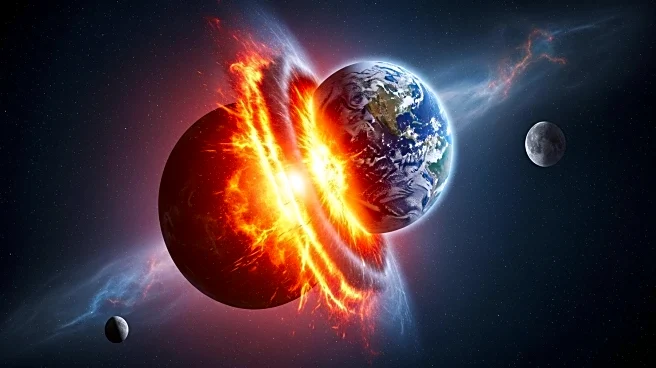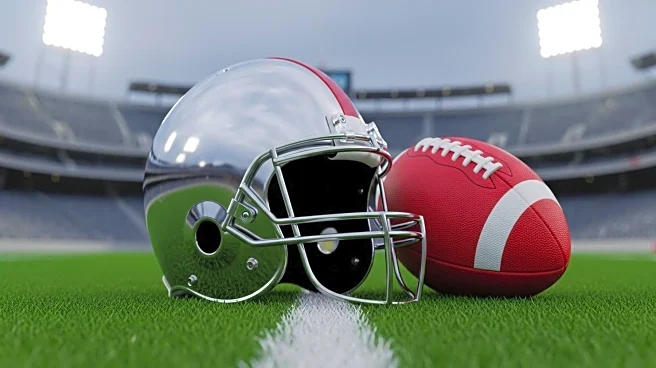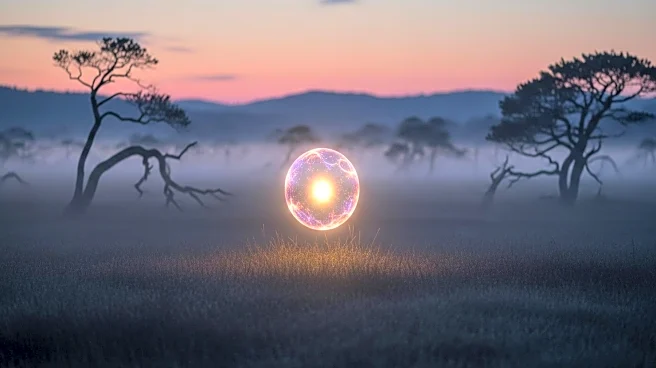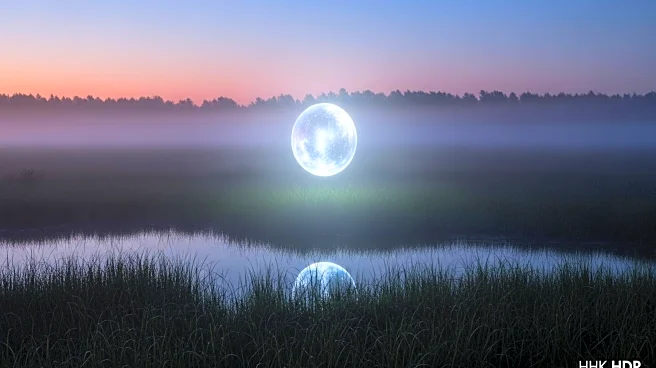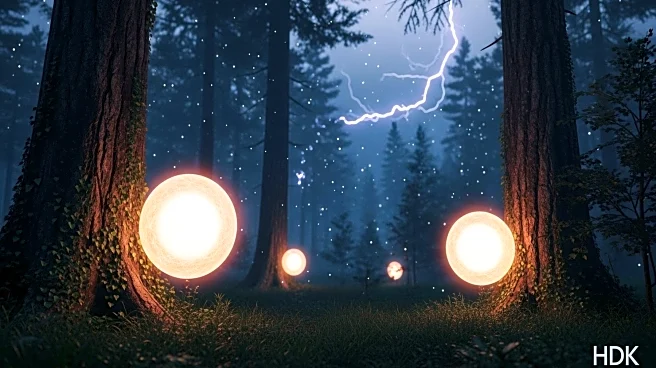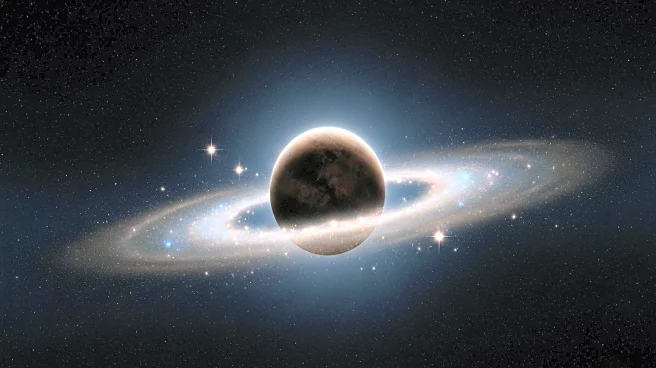What's Happening?
A recent study conducted by chemists at Stanford University has proposed a scientific explanation for the ghostly lights known as will-o'-the-wisps, jack-o'-lanterns, or ignis fatuus, which have been reported in swamps, forests, and graveyards worldwide for centuries. The study suggests that these mysterious lights are caused by a phenomenon called 'microlightning.' This form of electrical energy occurs in electric fields where gases meet liquids, creating tiny bolts that jump between bubbles of different charges and ignite methane gas. The researchers conducted lab experiments where air and methane were piped into water to generate bubbles, capturing flashes of microlightning with high-speed cameras. The study found that microlightning was more prevalent when methane was present, offering a natural ignition mechanism for methane oxidation under ambient conditions. This discovery provides a physically grounded explanation for the occurrence of ignis fatuus and supports a long-suspected link between electrified interfaces and spontaneous cool flames.
Why It's Important?
The identification of microlightning as the cause of ghostly lights has broader implications beyond folklore. It offers insights into natural ignition mechanisms that could impact our understanding of methane oxidation processes. Methane is a potent greenhouse gas, and understanding its natural ignition could influence environmental studies and climate change models. Additionally, the study suggests that microlightning might have played a role in the origin of life, providing the spark for chemical reactions that led to life from non-living matter. This could have significant implications for fields such as astrobiology and the study of life's origins. The research bridges the gap between folklore and science, providing a tangible explanation for phenomena that have puzzled cultures for centuries.
What's Next?
Further research could explore the conditions under which microlightning occurs naturally and its potential impact on methane emissions in various environments. Scientists may investigate how this phenomenon can be harnessed or mitigated in efforts to control methane emissions, contributing to climate change strategies. The study opens avenues for interdisciplinary research, combining chemistry, environmental science, and physics to explore the implications of microlightning in natural and industrial settings. Additionally, the findings could inspire new studies into the role of electrical phenomena in the origin of life, potentially leading to breakthroughs in understanding how life began on Earth and the possibility of life elsewhere in the universe.
Beyond the Headlines
The study of microlightning and its role in igniting methane bubbles touches on ethical and environmental considerations. Understanding natural ignition processes could inform policies on methane management and environmental protection. The research also highlights the intersection of science and culture, as it demystifies phenomena that have been part of folklore for centuries, offering a scientific basis for stories passed down through generations. This could influence cultural perceptions of natural phenomena, encouraging a scientific approach to understanding the world while respecting traditional narratives.

